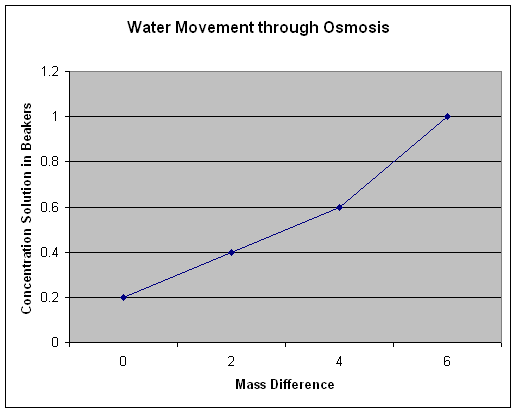

Scenario A:
During an experiment at a high school biology classroom, a group of students decide to perform an investigation. For their investigation, they fill up four different dialysis bags with 0.2 M solution and place them in four different beakers containing different concentration solution as you can see below. The students want to find out which dialysis bag will result in no mass change.


A. Write a question that could be the basis of their investigation.
Which beaker will result in no loss or gain of water?
OR:
Which beaker is hypotonic to the bag?
OR:
Which beaker will result in no change in mass of the dialysis bag?
B. What is the hypothesis for this investigation?
If a dialysis bag is placed in a beaker with the same concentration solution, then the mass of the dialysis bag will not change.
C. Identify the independent, dependent, and constant variable.
Independent Variable: The concentration solution inside the beaker
Dependent Variable: The mass of the dialysis bag
Constant Variable: The concentration solution inside the dialysis bag
D. Describe three essential steps in the procedure needed to conduct your new valid investigation about osmosis and movement of water. The procedure must be written so that students in another science class could clearly follow your instructions and successfully complete the experiment.
1. Tie off one end of your piece of dialysis bag, pour 10 mL of 0.2 M solution in each dialysis bag, remove most of the air from the bag, and tie off the other end of the bag.
2. Record each bags’ initial mass (grams) and place the bags into a 100-mL beaker filled two-thirds of the way with different solutions provided. Each beaker should have a different concentration of solution in it
3. Wait for thirty minutes, and then remove the bags from the water. Carefully mark and determine the mass of each bag.
E. Construct a data table in the space below that other students could use to record and analyze the data collected during the new experiment related to osmosis and movement of water. Be sure to label rows and columns appropriately and to include units if necessary.
Osmosis and Movement of Water:
|
Concentration solution in the beaker (M) |
Concentration solution in the dialysis bag (M) |
Initial mass (grams) |
Final mass (grams) |
Mass difference (grams) |
|
0.2 M |
0.2 M |
10 g |
10 g |
0 g |
|
0.4 M |
0.2 M |
10 g |
12 g |
2 g |
|
0.6 M |
0.2 M |
10 g |
14 g |
4 g |
|
1.0 M |
0.2 M |
10 g |
16 g |
6 g |
F. Use all data from the data table to construct a multi-line graph on the grid below. Be sure to provide an appropriate title, labeled axes with appropriate units, appropriate number scales, and correctly plotted data with a key.
